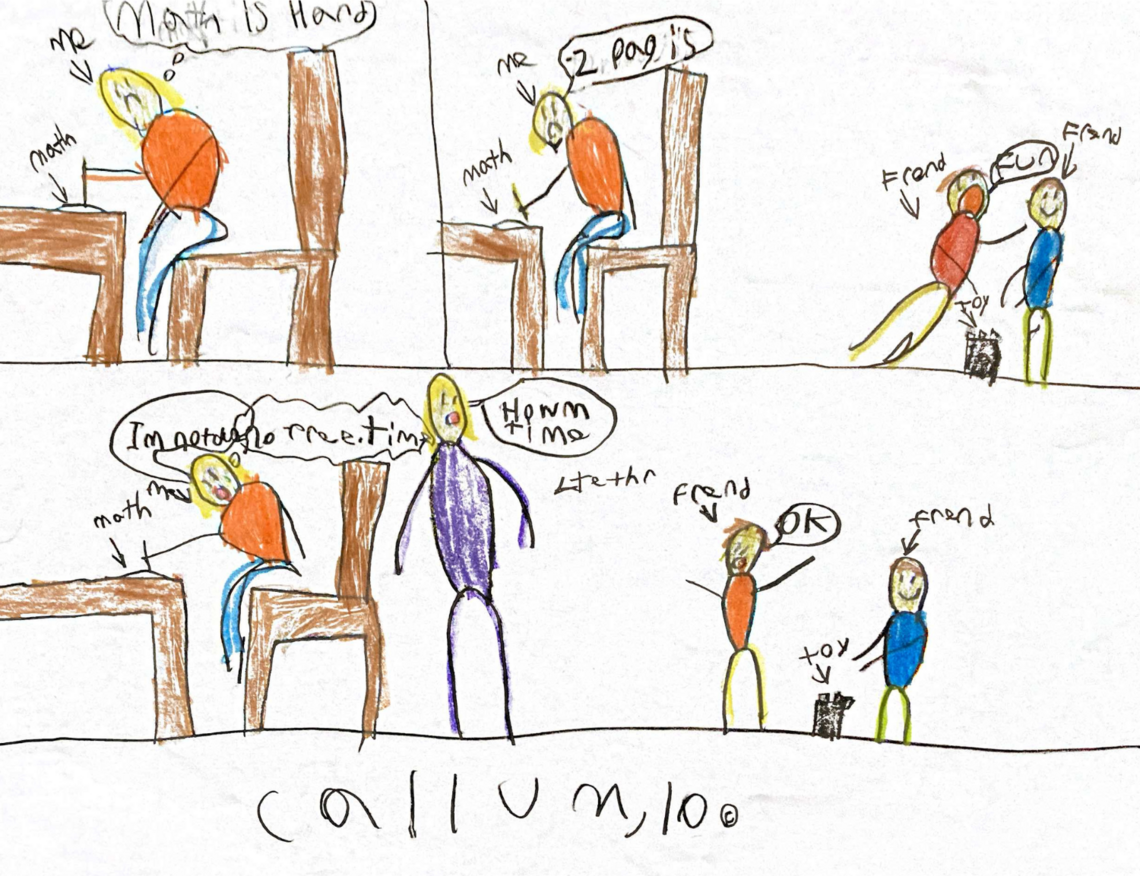
Feb. 26, 2024
Be curious: supporting neurodivergence in the workplace


My eldest child, Callum, is learning about what it means to live with dyslexia, dysgraphia, and dyscalculia. Recently, he composed a story about his life and learning about his neurodivergence:
I think it was grade 2, and I wasn't sure if it was adding or multiplication. I was getting very behind with things, and I also thought it might be because I just moved to a new school. So, there's like a double-sided math sheet. And I'm still on the first side of the math sheet, and my friends are already doing free time, because they've already finished it. This mostly happens with math and I was also behind in the reading.
As I read his story, I think about how many more children sit at their desks, working on a math sheet, wondering how other kids finished their work so quickly. How those students are then rewarded with free time and play which is so important for growing minds.
How many of us struggle with the proverbial math sheet at work wondering why our colleagues never seem to miss an email or deadline? We can likely all relate to things we’re good at in our jobs and other areas where we face difficulties. How to do our best work is something many of us are reckoning with in the workplace.
In my time with the Work-Integrated Learning (WIL) for Neurodiverse Students Initiative over the past year, I’ve met many staff, students, and faculty with later in life diagnoses who share the struggles they faced as children and still deal with in the workplace.
When I think about adult ‘math sheets’, I consider how we’ve created entire work cultures around emails and instant messaging — certainly a challenge for those with dyslexia but also for those who might miss subtle nuance or speak English as a second language.
How do we normalize speech-to-text in the workplace? Could we pick up the phone again to reach out and talk to someone? What about meetings where lots of information is verbally shared but little provided in writing? Our go-to communication methods may work for some minds, but not for others whose brains might struggle with organizing and prioritizing information.
As I think more about neurodiversity in the workplace, my suggestion to start is simple: be curious! Ask your colleagues how they do their best work and see if you can implement 1 or 2 changes to your work habits that create more accessibility in meetings, work tasks, or office culture.
Big changes take time but all of us can contribute to systems change one conversation at a time.
In partnership with The Sinneave Family Foundation, this initiative aims to ensure neurodivergent students thrive in work-integrated learning opportunities.
